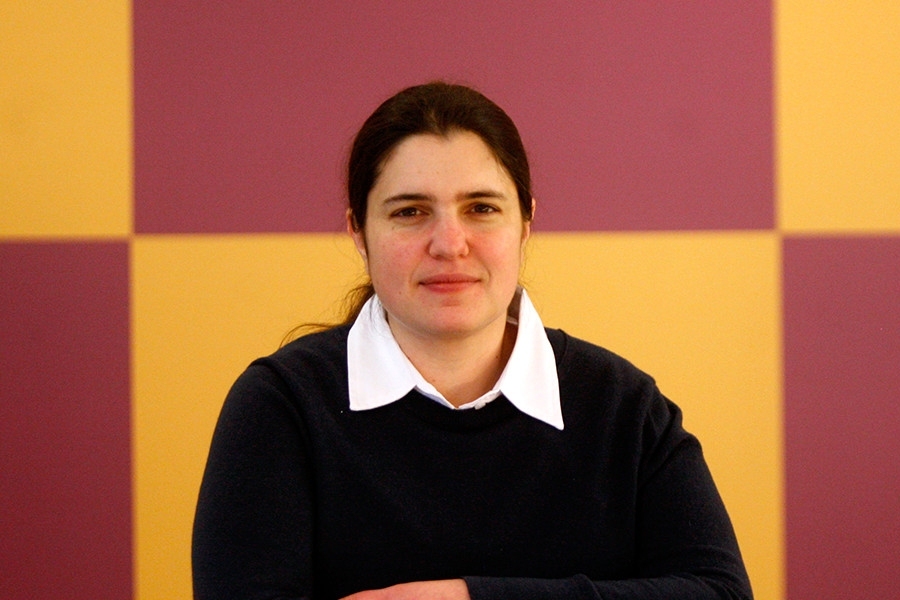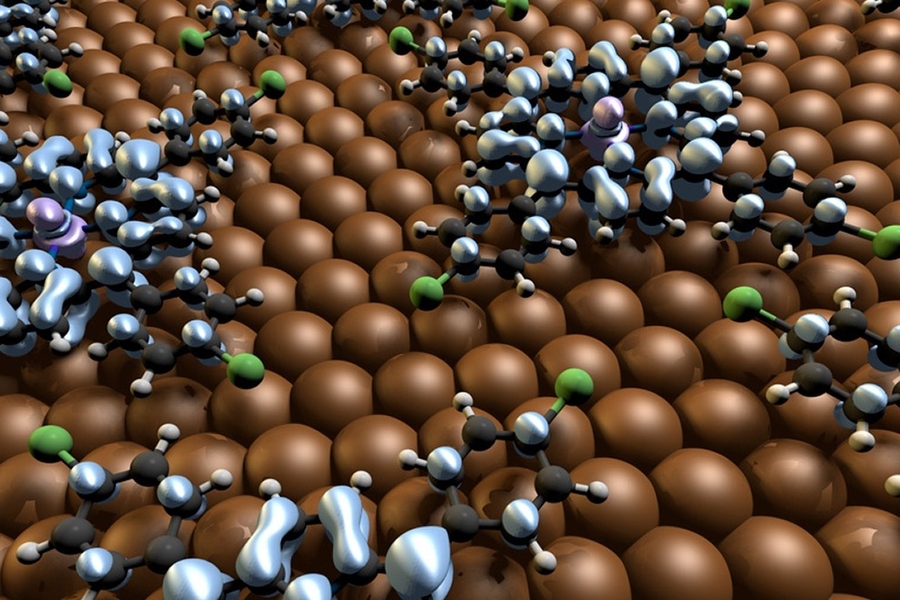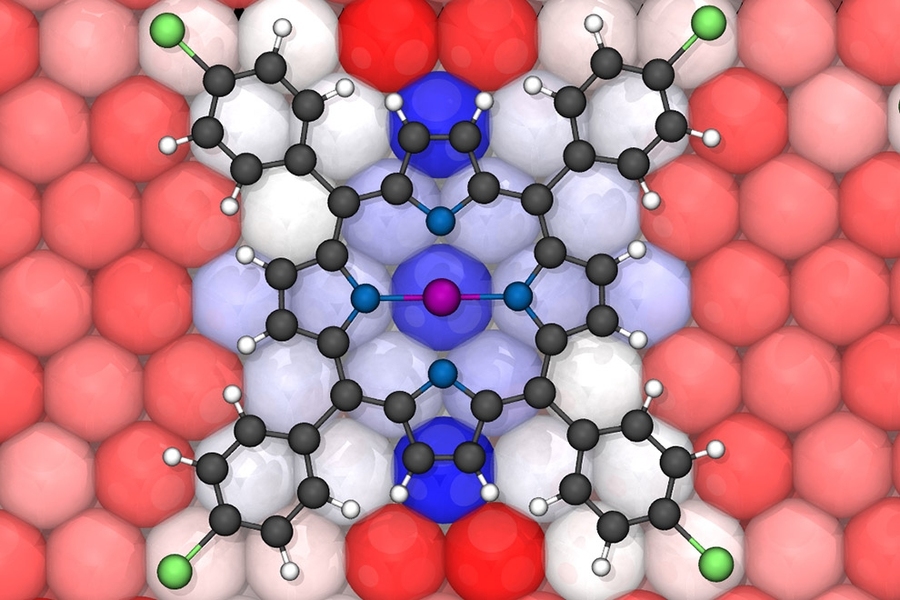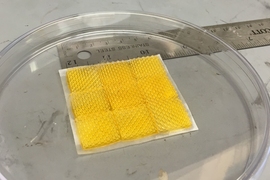Without setting foot from her office, Heather Kulik, the Joseph R. Mares '24 Career Development Assistant Professor of Chemical Engineering, is charting unknown worlds. Her discoveries plumb “vast regions of chemical space,” she says, a domain comprised of combinations of chemical elements that do not yet exist. “Best estimates indicate that we have likely made or studied only about 1 part in 10 to the 50th of that chemical space,” she says.
Kulik is pioneering computational approaches to this near-infinite space with the potential to greatly accelerate identification and design of new chemicals. Her pathbreaking work in the field of cheminformatics is quickly earning acclaim, including top billing in the “2017 Class of Influential Researchers” published by Industrial and Engineering Chemistry Research. Kulik is part of a select group showcasing scientists in the first third of their careers with key impacts on chemical engineering.
For Kulik, the stakes involved in this research cannot be underestimated: “All of the possible materials and compounds that could solve outstanding challenges in energy or other new technologies live in this large combinatorial space,” she says.
“In the past, through trial and error, we managed to create lots of materials with practical real-world use, like steel, and more recently Teflon,” she notes. “But trial and error is too slow now, and chemical intuition, though valuable, is not enough.”
Transition metals at the core
As a doctoral student, Kulik seized on the importance of transition metals in chemical discovery. Generally occupying the d-block on the periodic table (think iron, manganese, and copper), these elements appear in inorganic molecules. “Almost all materials with desirable properties feature a transition metal surrounded by an organic environment,” says Kulik. These include materials central to applications in pharmaceuticals, biotechnology, and energy. “Transition metals are incredibly reactive, with electrons that do interesting things,” she says.
But the very same electronic properties that make these transition metals cornerstones for all kinds of materials make them very tricky to characterize computationally. The standard modeling approach, called density functional theory (DFT), doesn’t do a good job predicting structure and behavior when a transition metal-based molecule is larger than a few atoms.
Applying a novel set of mathematical parameters, Kulik figured out a way to correct for DFT errors to “achieve better estimates of reactivity … and get closer to exact solutions for big molecule systems.”
Building on this foundation, Kulik has developed strategies for identifying potentially useful chemical materials and optimizing important properties such as spin state, chemical bonds and structure, and redox potential (the measure of a chemical’s tendency to acquire electrons).
Her research group published molSimplify, an open source software code that allows researchers a speedy way of generating potential transition metal complexes from building blocks. More recently, her team expanded the functionality of this code by incorporating a trained artificial neural network to predict the structure of a transition metal compound’s properties, such as ground vs excited state and geometry. With this extension, Kulik made it possible for scientists to assess potential molecular complexes in an instant rather than wait over long periods for a simulation to complete.
“This network can tell us in a fraction of a second the quantum mechanical spin state, and predict what structure should be around the transition metal … and allows us to enable discovery in a wide range of chemical space,” says Kulik.
In another venture, Kulik has mined the contents of online databases featuring millions of organic molecules, and derived a formula for making critical reactions move faster. “From our analysis, we’ve revealed a design rule to hand to experimentalists,” she says.
This screening approach has created a new way of using the enormous organic chemical database: “People don’t normally look at this library for anything outside of pharmaceutical design, and we showed how we could use these libraries as building blocks for discovering new chemistry in very different fields,” she says.
Together, these computational and software programs create what Kulik calls a “design tool kit” that can help researchers master “the quantum mechanical peculiarities of transition metal behavior” and speed creation of important new chemical compounds.
Eager for the next challenge
Accelerating discovery has been a theme of Kulik’s life since childhood. As a mathematically precocious child growing up in central New Jersey, Kulik was pursuing college-level courses while in middle school. “I was initially driven by boredom and wanted things that made me think,” she says. She also relished computer programming and the internet, creating a high school blog in 1998 featuring not just her own poetry and short stories, but illustrations. This art served as a training ground for the graphics she designs for her website and research.
She attended tiny Cooper Union in New York City, attracted not just by the free education but by the lure of Manhattan’s exciting arts scene. A chemical engineering major, she had intended to get a job after college, but a course introducing her to protein crystallography at Rockefeller University changed her trajectory. “The visual aspect of crystal structures drew me in,” she says.
That summer, she interned at Rockefeller University. “It was an experimental lab, and we were supposed to pour things, and I was a disaster at it,” she recalls. “I realized I wanted to see results right away, and I didn’t like the idea of mixing things by recipe, using trial and error, waiting to get lucky.” Kulik recognized that the kind of research that best suited her involved computation and modeling, which enabled her to visualize and manipulate molecular structures with immediate results.
Today, Kulik — who earned a PhD from MIT in 2009 — applies ever-more sophisticated mathematical approaches to projects with real-world applications. One venture involves creating a new generation of quantum dots, a material with useful electronic properties that emits bright light. Current quantum dots, made from toxic transition metals, are used in televisions and lighting. “We want to create non-toxic quantum dots that could possibly be used in human cells, where they could help track if someone has cancer,” says Kulik.
In the energy field, she is designing molecular catalysts that could help split water for hydrogen fuel with the precision and high yields unobtainable when using solid state catalysts. And Kulik is investigating the chemistry for a redox flow battery, a storage technology intended for renewable energy sources such as solar.
While she enjoys applied research, Kulik finds the greatest gratification in seeking answers using computation and basic science. “I like most the idea that there is unknown and new chemistry out there I don’t know about yet that could lead to solutions of problems,” she says. “I care more about how to enable discovery than about solving a particular problem, because there will always be new problems to solve that we may not have thought of yet.”









